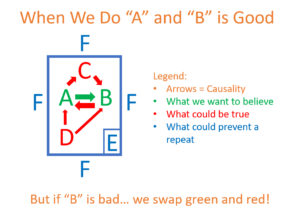
We all use evidence in our decisions. However, we tend to use the kinds easiest to get, like past experiences and advice from peers or Web searches. This “anecdotal” evidence is limited in scope and filtered by unconscious biases, and thus is proven to reduce decision quality when used by itself. So:
“Evidence-based management (EBM) is about making decisions through the conscientious, explicit, and judicious use of four sources of information: practitioner expertise and judgment, evidence from the local context, a critical evaluation of the best available research evidence, and the perspectives of those people who might be affected by the decision” [italics added].[1]
Unfortunately, most managers don’t have easy access to objective data from scientific research, or training on how to evaluate and apply it. This page seeks to address that problem. It lists various resources on this site and elsewhere by topic. All are based on many studies (or studies of studies), so their advice is more likely to apply to any workplace than the limited perspectives of most management gurus.
- Agile Project Management:
- Diversity:
- Empowering Workers: Evidence for Empowerment
- Evidence-Based Management:
- SHRM-SIOP Science of HR Series—Various topics
- Organizational Structure
- Team Management:
- Meeting Facilitation:
- Virtual Teams
- EBM-Based Method—Self-Directed Agile
- Startups:
- Organization
- EBM-Based Method—FuSca™ Light
- Trust
- Unconscious Impacts on Decision-Making:
- Implicit Bias Self-Tests—Project Implicit (Harvard Univ.)
- Social Power
- Willful Blindness
[1] Rob B. Briner, David Denyer, and Denise M. Rousseau, “Evidence-Based Management: Concept Cleanup Time?,” Academy of Management Perspectives 23, no. 4 (2009): 19–32.
